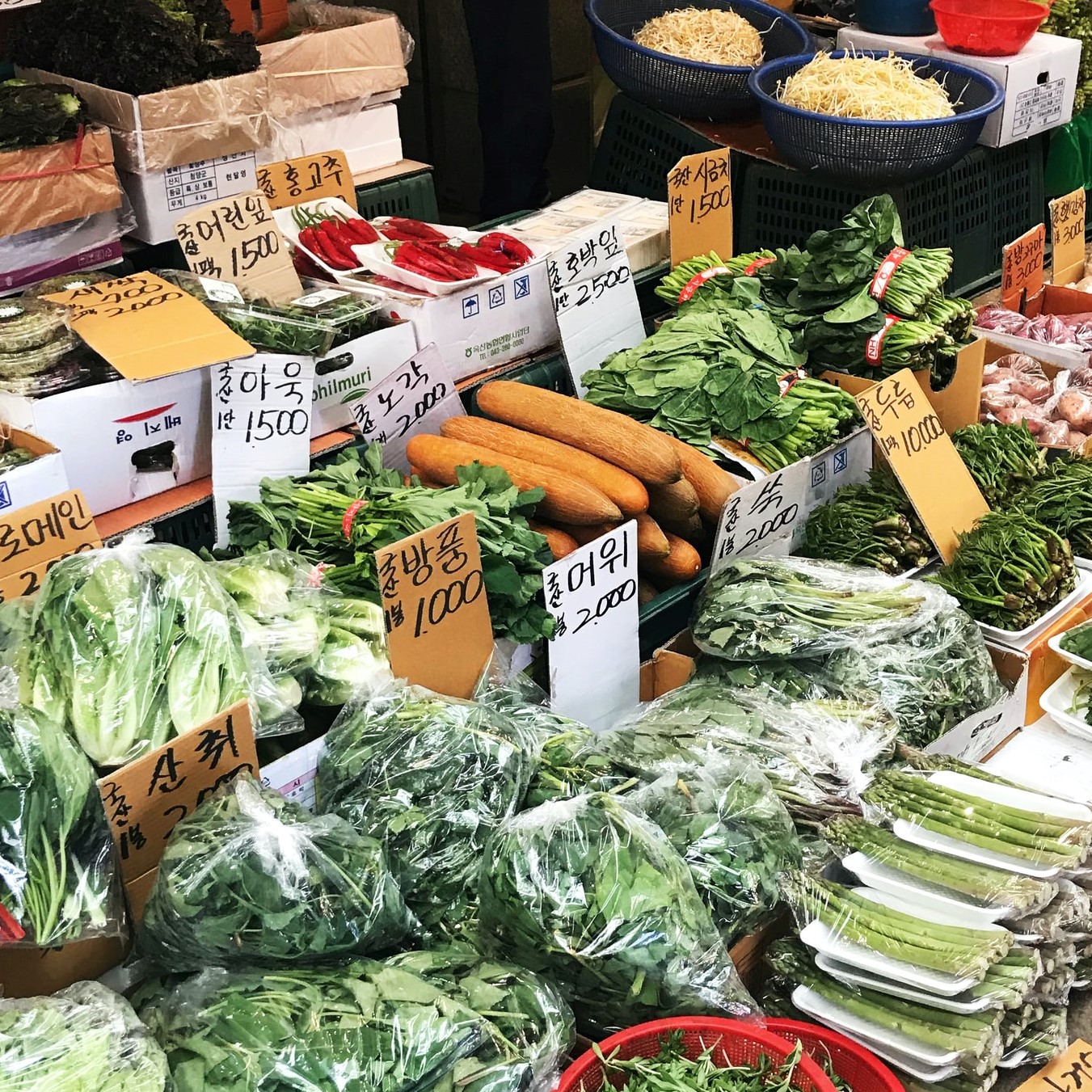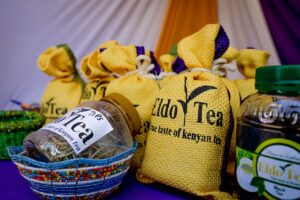Photo by Giselle Herrera on Unsplash
In this post we’ll learn the numbers in Korean, which you’ll see come in two different kinds. We’ll also see a few common examples of how they’re used.
Two Kinds of Numbers?
Korean uses two different number systems. The “Native Korean” numbers are used mostly to express quantities lower than 100, for example times, a person’s age, or expressing lower quantities of people or object: two cups of coffee, three students, thirty years old, etc. They’re also used to count hours in giving the time, but not minutes or seconds. You only have to learn how to count up to 99 in the Korean system, because even though there are higher numbers, they’re never used.
The other set of numbers is called “Sino-Korean,” because these numbers were borrowed from Chinese. Sino-Korean numbers are used to talk about days, months, and years when giving the date; to express seconds and minutes; to give phone numbers; and to discuss money and prices and anything else associated with larger numbers. Sino-Korean numbers go from zero to infinity, as you can probably guess.
Native Korean Numbers: 1-10
Let’s start with one through ten in the Korean system.
- 하나hana one
- 둘dul two
- 셋set three
- 넷net four
- 다섯 daseot five
- 여섯 yeoseot six
- 일곱 ilgop seven
- 여덟 yeodeol eight
- 아홉 ahop nine
- 열 yeol ten
Native Korean Numbers: 11-19
Teens in the Native Korean system all begin with 열yeol (ten), simply attached to the ones place number.
- 열하나 yeolhana eleven
- 열둘 yeoldul twelve
- 열셋 yeolset thirteen
- 열넷 yeolnet fourteen
- 열다섯 yeoldaseot fifteen
- 열여섯 yeolyeoseot sixteen
- 열일곱 yeolilgop seventeen
- 열여덟 yeolyeodeol eighteen
- 열아홉 yeolahop nineteen
Native Korean Numbers: 20-99
The tens place numbers from twenty through ninety have their own forms, not entirely predictable from the basic ones place numbers.
- 스물 seumul twenty
- 서른 seoreun thirty
- 마흔 maheun forty
- 쉰 shwin fifty
- 예순 yesun sixty
- 일흔 ilhun seventy
- 여든 yeodeun eighty
- 아흔 aheun ninety
To form numbers in between simply say the ones place after the tens place.
- 스물 일곱
seumul ilgop
27 - 서른 여덟
seorun yeodeol
38 - 아흔 다섯
aheun daseot
95
Using Native Korean Numbers
Let’s see some typical examples of how you might use Native Korean numbers. Remember, these are normally used to count people and things below 100, to give the hour in times, and to talk about age.
- 물 두 잔 주세요.
mul du jan juseyo.
Two glasses of water, please. - 몇 시예요?
myeot shiyeyo?
What time is it? - 저녁 일곱시예요. / 아침 열한시예요.
jeonyeok ilgopshiyeyo. / achim yeolhanshiyeyo.
It’s seven o’clock in the evening / eleven o’clock in the morning. - 자매가 몇명 있어요?
jamaega myeotmyeong isseoyo?
How many sisters do you have? - (나는) 두명의 자매가 있어요.
(na-neun) dumyeong-e jamae-ga isseoyo.
I have two sisters. - 몇 살이에요?
myeot sarieyo?
How old are you? - (나는) 스무살/서른 다섯살/ 쉰살 이에요.
(na-neun) seumusal/seoreun daseossal/ shwinsal ieyo.
I’m twenty/ thirty five/ fifty years old.
GRAMMAR TIP! Did you notice the words 잔 jan and 명 myeong in the examples above? These are called counters, and you need to use them when you count things in Korean. Check out the note at the end of this post for more information.
Sino-Korean Numbers: 0-10
Now let’s move to the Sin-o-Korean numbers, starting with 영 yeong zero through 십 ship ten.
- 영 yeong zero
- 일 il one
- 이 i two
- 삼 sam three
- 사 sa four
- 오 o five
- 육 yuk six
- 칠 chil seven
- 팔 pal eight
- 구 gu nine
- 십 ship ten
Sino-Korean Numbers: 11-19
Eleven through nineteen are formed by simply starting with 십 shib (ten) and adding the ones-place number.
- 십일 shibil eleven
- 십이 shibi twelve
- 십삼 shipsam thirteen
- 십사 shipsa fourteen
- 십오 shibo fifteen
- 십육 shibyuk sixteen
- 십칠 shipchil seventeen
- 십팔 shippal eighteen
- 십구 shipgu nineteen
Sino-Korean Numbers: 20-99
To form twenty, thirty, forty, and so on, simply reverse the order that you use in the teens. For example, ten + ones place number gives you teens, such as십이 shibi twelve. If you reverse the order to ones place number + ten, you get twenty and higher, such as 이십 iship twenty. For numbers between the tens place, just add another ones place number, for example two + ten + three is 23.
- 이십 iship twenty
- 이십일 ishibil twenty-one
- 이십이 ishibi twenty-two
- 이십삼 ishipsam twenty-three
- 이십사 ishipsa twenty-four
- 이십오 ishibo twenty-five
- 삼십 samship thirty
- 사십 saship forty
- 오십 oship fifty
- 육십 yukship sixty
- 칠십 chilship seventy
- 팔십 palship eighty
- 구십 guship ninety
Sino-Korean Numbers: Higher Numbers
And here are higher number from 100 on. English has unit words to define hundred, thousand, and million. Korean has those, but also adds the unit 만 man for 10,000. So 100,000 is ten 만 man instead of one hundred 천 cheon.
- 백 baek 100
- 이백 ibaek 200
- 삼백 sambaek 300
- 사백 sabaek 450
- 천 cheon 1,000
- 이천 icheon 2,000
- 만 man 10,000
- 십만 shipman 100,000
- 백만 baekman 1,000,000
Using Sino-Korean Numbers
Let’s see some typical examples of how you might use Sino-Korean numbers. Notice that these examples involve dates, prices, phone numbers, addresses, floors, and room numbers.
- 오늘 며칠이에요?
oneul myeochil ieyo?
What’s the date today? - 오늘은 이천이십일년 십일월 팔일이에요.
oneul-eun icheon iship-il nyeon shipilweol palil ieyo.
Today is November (“11th Month”) 8, 2021. - 비용이 얼마예요?
biyongi eolmayeyo?
How much does it cost? - 만원이에요.
manwonieyo.
It costs 10,000 won. - 전화번호가 뭐예요?
jeonhwabeonho-ga mwoyeyo?
What is your phone number? - 나의/내 전화번호는 공일공 일이삼 사오육칠이에요. (010-123-4567)
na-e/nae jeonhwabeonho-neun gongilgong irisam saoyukchirieyo. (010-123-4567)My phone number is 010-123-4567. - 호텔은 어디에 있어요?
hoter-eun eodi-e isseoyo?
Where is the hotel? - 호텔은 종로구 이십오25에 있어요.
hoter-eun jongrogu 25-e isseoyo.
The hotel is at 25 Jongno-gu. - 삼층에 있는 삼십 칠호예요.
samcheunge itneun samship chilhoyeyo.
It’s room number thirty seven, on the third floor.
GRAMMAR TIP!
When you count things or use numbers in Korean, you need to use grammatical particles called “counters.” The counter you’ll use depends on what you’re counting. The most common ones are:
- 개 gae general, small objects, items
- 명, 사람, 분 myeong, saram, bun people
- 잔 jan cups, glasses
- 병 byeong bottles
- 장 jang paper, tickets, shirts
- 원 won Korean currency, ₩
- 권 gweon books
- 대 dae mechanical things
- 채 chae houses, buildings
- 층 cheung floors in a building
- 벌 beol clothing
- 켤레 kyeolle pairs of shoes or socks
- 시 shi time in hours
- 분 bun minutes
- 초 cho seconds
- 살 sal age in years
- 월 wol months
- 년 nyeon years
Counters for Sino-Korean numbers typically follow the simple format number + counter.
- 만원 manwon 10,000 Won
- 십일월 shipilweol November (“Eleven-Month”)
- 천 명 cheon myeong one thousand people
With Native Korean numbers, you typically use a noun expressing the item you’re counting (물 mul water or 자매 jamae sister below). There are a few different patterns, but the most common are:
- item noun + number + counter, for example:
물 두 잔 주세요.
mul du jan juseyo.
Two glasses of water, please. - number + possessive particle –의 -e + item noun, for example:
두명의 자매가 있어요.
dumyeong-e jamae-ga isseoyo.
I have two sisters.
Learn Korean with the Language Garage
Check out our other posts on Korean language, culture, and more. And if you’re looking for convenient and affordable live Korean lessons with a real teacher, check out The Language Garage. Our lessons are given online in a virtual classroom, so it doesn’t matter where you live or work – we can come to you. And we have flexible options, with a free trial so that you can decide if there’s a fit. Check us out!





